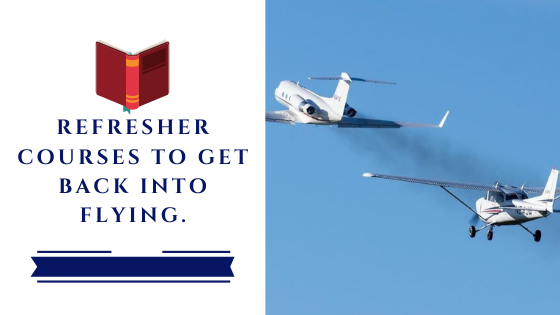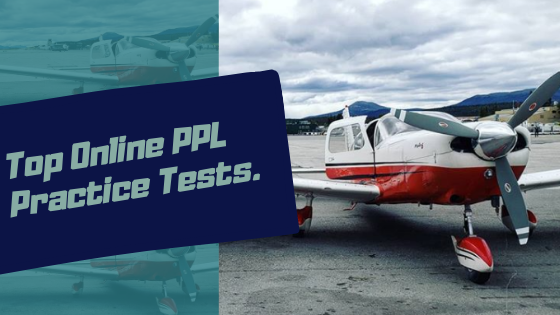Insights on the pre-solo written exam for novice student pilots.
“Pre-Solo Written Exam” in pilot training refers to an examination that aspiring pilots must pass before they are allowed by their flight instructor to fly solo.
This exam’s content and structure may vary depending on the aviation authority or your flight school.
What doe the Pre-Solo Written Exam content?
The exam may focus on particular areas of knowledge, such as aerodynamics, aircraft systems, regulations, navigation, meteorology, and emergency procedures. Your proficiency in each region may be evaluated separately.
Generally, the pre-solo written exam assesses a student pilot’s knowledge of essential aviation topics and regulations. The exam may cover areas like:
Aviation regulations:
Questions may focus on the rules and regulations of the relevant aviation authority, including airspace classifications, air traffic control procedures, and flight operations.
Aerodynamics and flight principles:
This section tests the pilot’s understanding of basic aerodynamics, aircraft control surfaces, principles of flight, and performance calculations.
Aircraft systems and powerplant:
Students may be quizzed on various systems and components of the aircraft they are training on; those include the engine, electrical system, fuel system, navigation instruments, and communication equipment.
Meteorology:
The pre-solo written exam/test may contain very little regarding aeronautical weather, but learning about weather flying is essential for safe operations.
Navigation:
Questions may assess the pilot’s knowledge of navigation techniques, including reading and interpreting aeronautical charts, using navigation aids, calculating heading and groundspeed, and understanding the principles of pilotage and dead reckoning.
You may see questions about VFR flight planning as it’s vital for conducting solo flights.
Emergency procedures:
This portion tests the pilot’s understanding of emergency protocols and procedures for different scenarios, such as engine failures, loss of communication, and various in-flight emergencies.
What ground class lessons matter most during the pre-solo stage?
Aviation Regulations: Familiarize yourself with the aviation regulations and rules that govern flight operations, including the specific laws related to student pilots and solo flights.
Basic Aerodynamics: Understanding the Principles of Flight and the Effects of the four forces on your aircraft frame during in-flight maneuvers.
Aircraft Systems: Learning about the powerplant, flight controls, electrical systems, fuel systems, and the six basic instruments and what to do in case a system fails during flight.
Airspace and Air Traffic Control: Understanding different types of airspace, such as Class A, B, C, D, E, and G, and the regulations and procedures associated with each airspace. Learn different airspace procedures and communication phraseology to interact with air traffic controllers.
Navigation and Flight Planning: Learn to plan a cross-country flight and determine alternative routes in case of an emergency. Practice using navigation aids and charts.
Emergency Procedures: Learning to handle various emergencies, such as engine failures, electrical failures, and other in-flight emergencies. This includes understanding the appropriate checklists and procedures to follow.
Meteorology: Studying weather theory, including weather systems, cloud formations, atmospheric pressure, temperature, and wind, and interpreting weather reports and forecasts.
Human Factors: Understanding the human factors that can impact pilot performance, including decision-making, situational awareness, crew resource management, and physiological and psychological factors.
Gaining knowledge of basic aeromedical principles, such as the effects of altitude, hypoxia, spatial disorientation, and the importance of physical and mental fitness for flying.
Radio Communications: Learning the proper radio phraseology and communication procedures and understanding how to interact with air traffic control and other pilots in various situations.
Understanding the format of the pre-solo written exam.
The format of the pre-solo written exam varies.
It consists of multiple-choice questions, fill-in-the-blanks, and short-answer questions. The passing score required for solo flights varies based on the requirements of the aviation body or flight school.
It is important to note that while this provides a general overview, the specific requirements and content of the pre-solo written exam can differ between aviation authorities, countries, and flight training academies.
Aspiring pilots should consult their flight school or training provider for precise information regarding the exam.
Preparation for the Pre-Solo Written Exam:
Preparing for the pre-solo written exam requires essential studying materials, an understanding of FAA regulations, and the pilot operating handbook of the specific training aircraft.
Here are some steps to help you prepare:
Start by obtaining the necessary textbooks, pilot handbooks, and relevant publications for the ground school and your local aviation authority.
I urge student pilots to emphasize the following materials:
Buy a FAR/AIM and study PART 61 and PART 91. You don’t have to memorize everything but read thoroughly to understand the rules and regulations.
Get the Pilot Operating Handbook for the aircraft you fly.
Memorize the limitations of your aircraft and remember the vital information from that book. You’ll find several questions on the aircraft type limitations on your pre-solo exam.
The best practice is to memorize emergency procedures that will help you for your flight. Likewise, it will help you pass the pre-solo knowledge test.
Passing the pre-solo exam won’t be problematic, assuming you have finished your private pilot ground school.
Review aviation regulations:
Familiarize yourself with the regulations specific to your country or region. These regulations govern airspace, flight operations, and safety procedures. Study the relevant portions of the laws to ensure you understand the rules you will be expected to follow.
Understand aerodynamics and flight principles:
Study the basics of aerodynamics, including lift, drag, thrust, and weight. Learn about the control surfaces of an aircraft and how they affect flight. Understand key concepts like a stall, angle of attack, and maneuvering speed.
Study aircraft systems:
Become knowledgeable about the systems and components of the aircraft you are training on. Understand the engine, electrical, fuel, navigation instruments, communication equipment, and other relevant methods. Familiarize yourself with the emergency procedures associated with these systems.
Learn meteorology:
Study meteorological concepts such as weather patterns, cloud formations, weather hazards, and weather reports and forecast interpretation. Understand how different weather conditions can impact flight safety.
Brush up on navigation:
Gain a solid understanding of navigation techniques, including reading aeronautical charts, using navigation aids like VORs and GPS, calculating heading and groundspeed, and employing pilotage and dead reckoning methods.
Practice emergency procedures:
Review emergency protocols and procedures for different scenarios, including engine failures, loss of communication, and other in-flight emergencies. Understand the appropriate actions to take in each situation.
Take practice exams:
Practice exams can help you gauge your knowledge and identify areas that require further study. Many flight training organizations provide sample questions or practice exams that closely resemble the pre-solo written exam. Work through these practice exams to get comfortable with the format and assess your readiness.
Remember, the specific requirements and content of the pre-solo written exam may vary depending on your flight training organization or aviation authority. Always refer to the official guidelines and resources provided by your training organization and seek clarification if needed.
Recommended Study Techniques and Strategies:
Effective study techniques and strategies can enhance learning and retention when preparing for the pre-solo written exam. Here are some recommended methods:
Create a study plan: Develop a study plan that outlines the topics you need to cover and allocate specific time slots for studying each subject.
Take notes: While studying, actively take notes on key concepts, essential details, and any questions or areas that require further clarification.
Utilize visual aids: Create visual aids such as diagrams, flowcharts, or concept maps to represent complex information or relationships between different topics.
Practice active learning: Instead of passively reading or listening, use active learning techniques. For example, summarize information in your own words, teach the material to someone else, or engage in discussions or study groups with fellow students.
Test yourself: Regularly test your knowledge by taking practice quizzes, using flashcards, or solving sample exam questions.
Simulate exam conditions: Try to simulate exam conditions as closely as possible when practicing with sample exams or quizzes. Set a timer, work without distractions, and treat it as an exam.
Focus on weak areas: Identify your weak areas through practice exams or self-assessment.
Review and revise regularly: Review previously covered topics to reinforce your knowledge and prevent forgetting.
Seek clarification: If you encounter confusing or unclear information, don’t hesitate to seek clarification from your flight instructors, mentors, or fellow students.
Everyone has different learning styles, so feel free to adapt these techniques to suit your preferences and needs. Experiment with various methods to find what works best for you. Consistency, dedication, and a proactive study approach will significantly contribute to your success in the pre-solo written exam.
What is the passing score of the pre-solo written exam?
The exam may have a minimum passing score that you need to achieve to pass. This passing score is typically 70% or 80%.






